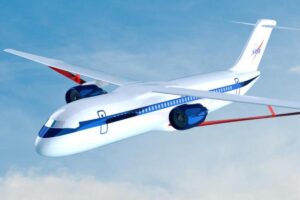Enhancing Data Communication with CAN Bus and Modbus
Abstract
This white paper explores the pivotal role of Controller Area Network (CAN) Bus and Modbus protocols in achieving seamless integration of control systems in industrial environments. Both protocols are widely used for data exchange, monitoring, and control of devices. This document provides an in-depth analysis of their functionality, applications, and benefits. It also presents insights into high-performance solutions for control system integration, focusing on their synergy and application in modern industrial automation.
Introduction
Industrial automation has revolutionized manufacturing, energy, transportation, and various other sectors by optimizing processes and reducing manual intervention. Communication protocols like CAN Bus and Modbus are foundational to these advancements, enabling reliable and efficient data exchange between devices. This white paper provides a comprehensive understanding of both protocols, their features, differences, and integration techniques for advanced control systems.
Overview of CAN Bus
1.1 Definition and History
The Controller Area Network (CAN) Bus protocol was developed by Bosch in 1986 to address the growing complexity of in-vehicle networks. It enables robust communication between microcontrollers and devices without the need for a host computer. Over time, CAN Bus has extended its applications beyond automotive systems to industrial automation, medical devices, and building management systems.
1.2 Key Features
- High Reliability: CAN Bus is designed for environments requiring high reliability, such as automotive and industrial systems.
- Real-Time Communication: The protocol supports time-critical data exchange, making it ideal for control applications.
- Error Detection: Advanced error detection mechanisms ensure data integrity.
- Multi-Master Capability: Multiple nodes can initiate communication without a central host.
1.3 Applications
- Automotive: Engine management, braking systems, and infotainment.
- Industrial Automation: Machine control, robotics, and factory automation.
- Healthcare: Patient monitoring systems and medical devices.
Overview of Modbus
2.1 Definition and History
Developed by Modicon in 1979, Modbus is a communication protocol widely used in industrial automation for connecting programmable logic controllers (PLCs) and other devices. It has become an industry standard due to its simplicity and robustness.
2.2 Key Features
- Open Protocol: Modbus is open-source, making it widely adopted and versatile.
- Master-Slave Architecture: A single master can communicate with multiple slave devices.
- Multiple Variants: Includes Modbus RTU, Modbus ASCII, and Modbus TCP/IP for different use cases.
- Scalability: Supports a wide range of devices, from small sensors to complex control systems.
2.3 Applications
- Energy Management: Monitoring and control of power systems.
- Manufacturing: Connecting sensors, actuators, and PLCs.
- Infrastructure: Building management and HVAC systems.
Comparison of CAN Bus and Modbus
3.1 Protocol Architecture
- CAN Bus: Employs a multi-master, message-oriented architecture.
- Modbus: Uses a master-slave architecture.
3.2 Communication Speed
- CAN Bus: Offers speeds up to 1 Mbps.
- Modbus: Speeds vary; Modbus RTU provides up to 115.2 kbps, while Modbus TCP/IP depends on the Ethernet infrastructure.
3.3 Data Integrity and Error Handling
- CAN Bus: Advanced error detection and correction.
- Modbus: Basic error checking using cyclic redundancy checks (CRC).
3.4 Network Topology
- CAN Bus: Typically uses a linear or star topology.
- Modbus: Supports daisy chain, star, and hybrid topologies.
Integration of CAN Bus and Modbus
4.1 Bridging Technologies
Integration of CAN Bus and Modbus is achieved through protocol converters or gateways, enabling seamless communication between devices on different networks. These devices translate data frames between the two protocols, maintaining data integrity and synchronization.
4.2 Benefits of Integration
- Enhanced Interoperability: Enables diverse devices to communicate efficiently.
- Centralized Monitoring: Simplifies data collection and control.
- Improved Flexibility: Supports diverse industrial applications.
4.3 Use Cases
- Smart Factories: Combining CAN Bus machine controls with Modbus-powered SCADA systems.
- Energy Systems: Monitoring and controlling CAN-based solar inverters and Modbus-based energy meters.
- Automated Warehousing: Integrating robotic systems with warehouse management systems.
Advanced Applications of CAN Bus and Modbus
5.1 Industrial IoT (IIoT)
Both protocols play a critical role in IIoT, enabling connectivity, real-time monitoring, and data-driven decision-making. CAN Bus supports high-speed data exchange in edge devices, while Modbus ensures compatibility with cloud platforms.
5.2 Predictive Maintenance
By integrating CAN Bus and Modbus data into centralized systems, predictive analytics can identify potential failures and optimize maintenance schedules.
5.3 Energy Efficiency
Energy management systems leverage the strengths of both protocols to optimize power distribution and reduce wastage.
High-Performance Solutions
6.1 Hardware Options
- Gateways and Converters: Devices like CAN-to-Modbus gateways ensure reliable protocol translation.
- Industrial PCs: Robust computing platforms with multi-protocol support.
- Embedded Controllers: Devices with built-in CAN Bus and Modbus interfaces.
6.2 Software Tools
- Configuration Software: Simplifies network setup and integration.
- Monitoring Tools: Enables real-time data visualization and troubleshooting.
- Simulation Software: Facilitates testing and validation of integrated systems.
Challenges and Best Practices
7.1 Challenges
- Compatibility Issues: Ensuring seamless communication between diverse devices.
- Network Congestion: Managing data traffic in large-scale systems.
- Security Concerns: Protecting networks from cyber threats.
7.2 Best Practices
- Standardized Protocols: Use industry-standard implementations of CAN Bus and Modbus.
- Regular Updates: Keep firmware and software up to date.
- Robust Design: Design networks with redundancy and error handling mechanisms.
Conclusion
CAN Bus and Modbus are indispensable communication protocols in industrial automation. Their complementary strengths make them ideal for integrated control systems, enhancing interoperability, efficiency, and scalability. By leveraging high-performance solutions and best practices, industries can achieve seamless communication and advanced automation.





